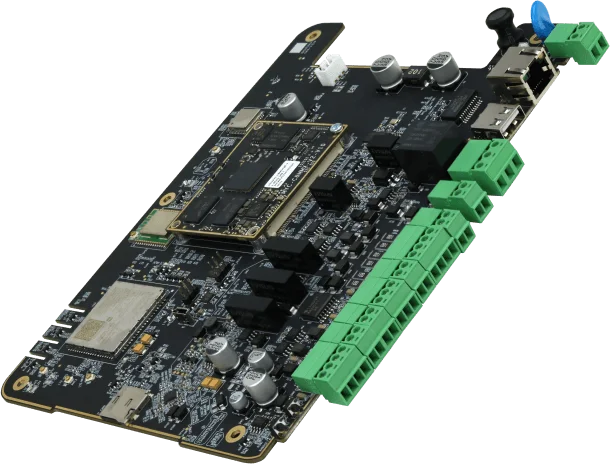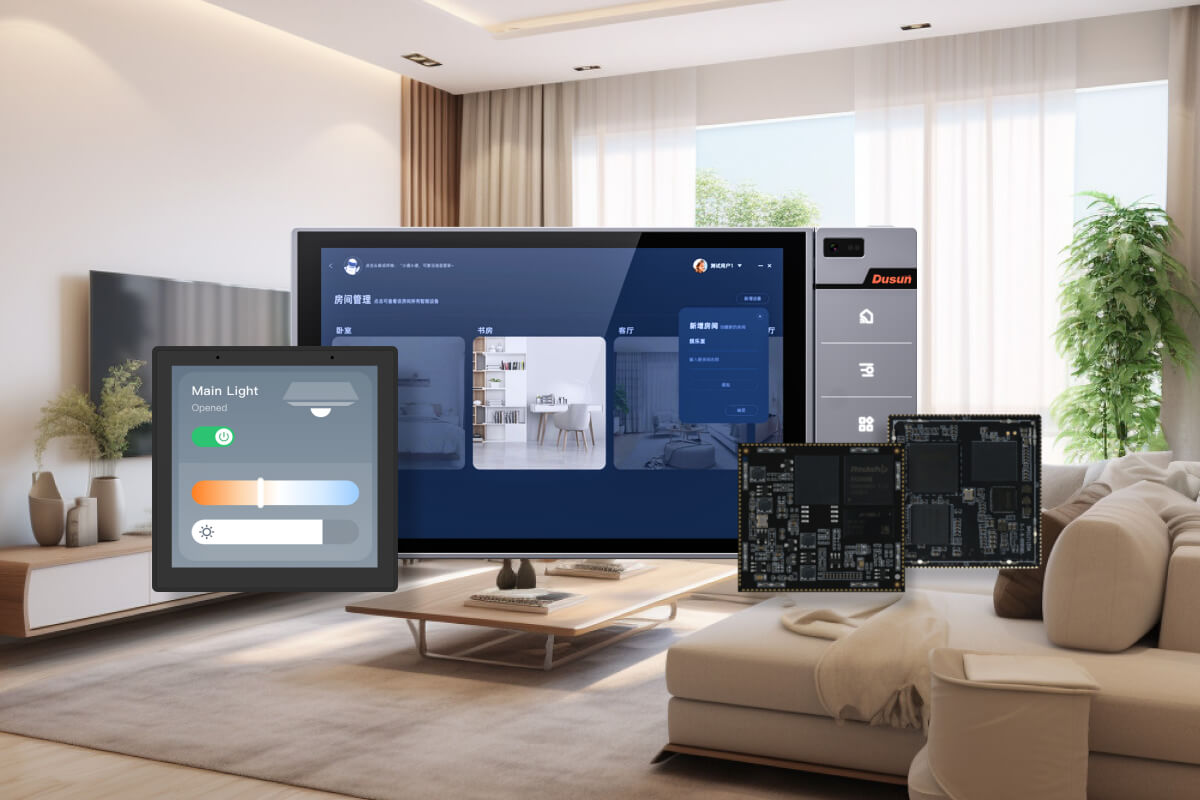IoT devices employ IoT technology to connect things to networks, transfer data over diverse networks to achieve mutual communication, or interact and exchange data through the Interne to accomplish intelligent control and automated management.
IoT devices include a range of sensors, actuators, edge computing equipment, smart gateways, and other components. These devices form a complete IoT system to realize data collection and remote connectivity.
What Are IoT Devices?
Two things are necessary to become an IoT device: 1) the device must be able to connect to the internet; 2) the device must be equipped with a technology — a sensor, tracker, chip or software that allows it to connect to other devices with the same technology.
How do IoT devices communicate? Communication protocols for connecting IoT devices functions at this point. Wireless protocols including Wi-Fi, Bluetooth, LTE, and ZigBee, as well as wired protocols like Ethernet, Modbus, and KNX, are frequently used to link IoT devices.
Wired IoT devices usually refer to devices connected to the network through network cables, which are commonly found in industrial settings, such as industrial gateways, converters, industrial robots, security cameras, and so on. They are connected to the network using network cables. Wireless IoT devices connected to the internet through 4G, WIFI, Bluetooth, etc., which widely used in daily life and business fields, such as smart home gateways, smart speakers, and smart office appliances.
How Do IoT Devices Work?
Although the functionality of IoT devices varies, there are certain commonalities in how they operate. IoT hardware itself consists of integrated CPUs, network adapters, and firmware that is frequently created using open-source software. Let’s examine the key elements of IoT and how they function as a whole.
IoT Smart Sensors
IoT workflows begin with sensor devices, which are field hardware used to gather data from the environment. A sensor is a device that monitors and responds to input from the physical world. The specific input may be light, heat, motion, moisture, pressure, etc., and the output is usually directly converted into human-readable information on the sensor, or through the network in digital form.
Explore: smart sensors in IoT
Network Connectivity
Network connectivity enables IoT devices to talk to each other and exchange data. Wired or wireless methods can be used to establish a network connection. Although a wired network is more reliable, its coverage is only as wide as the network cable can go. Since most IoT applications need a wider range, wireless network connections are becoming more crucial. The most popular wireless network technologies in recent years have included BLE, LoRa, ZigBee, narrowband IoTs, etc.
Explore: what is wireless gateway?
IoT sensors and other devices transfer data wirelessly to IoT gateway using the same protocol. Once the gateway get the data, they can use Ethernet, WiFi, or LTE to relay it to the rule engines, which are often housed in private or public clouds.
Data Processing
IoT devices produce enormous volumes of data in a variety of forms, and before the data can be used for any type of analysis or processing, some processing must be done on the data:
- standardize data or transform data into a uniform format that works with your application;
- store or create backups of newly converted format data;
- Filter any redundant, outdated, or unwanted data to improve accuracy;
Edge computing can analyze and process data using on the IoT edge, speeding up network service responses and addressing the fundamental requirements of businesses requiring real-time responses, artificial intelligence, security, and privacy protection. Smart devices for edge computing can be IoT terminals with special processing capabilities, or edge computing gateways or routers with certain data collection and data computing capabilities.
Types of IoT Devices
Each IoT device communicates with other related devices in the environment to enable remote monitoring, automated management, and other household and industrial tasks. According to user groups, these IoT devices can be divided into three major categories: consumer, enterprise, and industrial IoT devices.
For Consumers
Smart TVs, smart speakers, wearables, and smart appliances are just a few examples of IoT devices widely used by individual consumers. Take smart home as an example, IoT devices are made to sense and react to human presence. A person’s automobile interacts with the garage to open the door when they get home. Once inside, the lighting is tuned to a lower intensity and hue because their wristwatch data suggests it is a stressful day, and the thermostat has been set to its optimal setting. Other smart home appliances include robot vacuums that can figure out which rooms in the house need to be cleaned the most frequently and sprinklers that regulate watering based on the weather prediction.
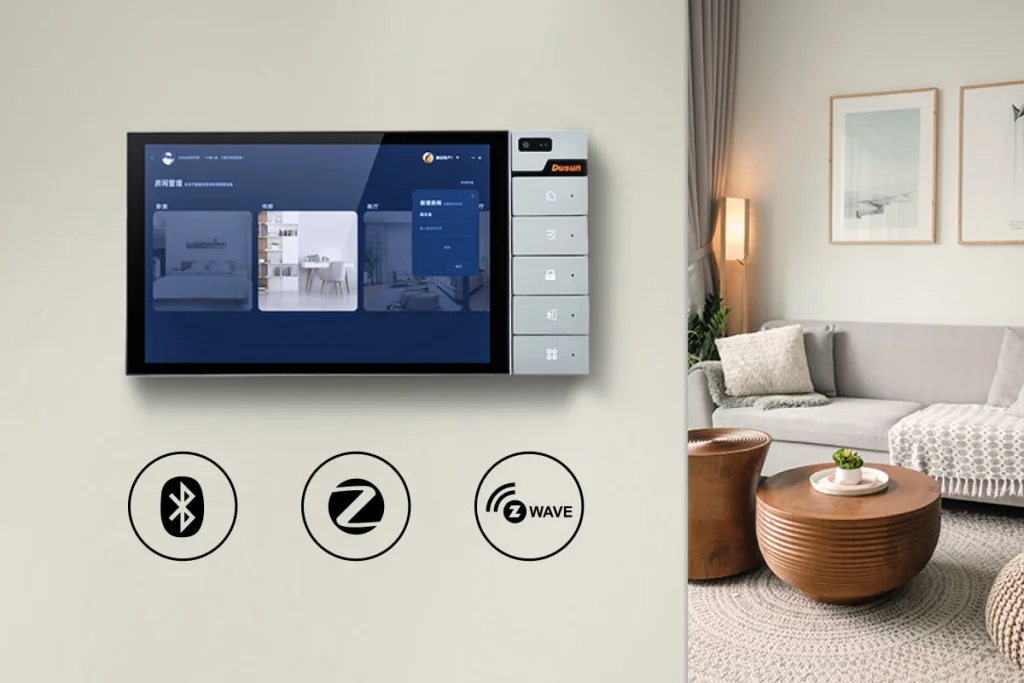
For Enterprises
There will be some overlap between consumer and corporate IoT devices, such as smart locks, thermostats, lighting, and security, but enterprise IoT devices often focus more on facility maintenance or increasing operational effectiveness.
For example, smart devices can help companies hold meetings. Employees may use smart sensors installed in meeting spaces to detect and schedule rooms that are open for meetings, ensuring that the ideal room type, size, and function are available. The temperature will change as participants enter the space, the lights will darken when the relevant slide presentation loads on the screen, etc.
For Industrial Automation
Industrial IoT devices are intended for use in manufacturing factories or other industrial environments. The majority of IIoT devices are sensors that keep an eye on production lines and other manufacturing operations, in order to make sure crucial operations are functioning as efficiently as possible. Data from various sensors may also help prevent unplanned downtime by predicting when parts will need to be replaced.
Benefits and Drawbacks of Using IoT Devices
One cutting-edge technology is the Internet of Things. It can employ a variety of Internet of Things devices to create a very big Internet of Things system, allowing data to be gathered, transmitted, and monitored in real time at any time by the Internet, and the information is able to be output automatically. That is to say, IoT devices can effectively monitor and automatically operate a variety of physical devices to efficiently perform tasks like remote connectivity, data collection and automated control.
In smart agriculture, IoT devices like smart sensors can collect information about soil composition, temperature, humidity, rainfall, and other variables and transfer data to back-end cloud servers, so as to facilitate the agricultural automation, helping farmers simplify their work.
You may also want to know: IoT Agriculture System Based on LoRaWAN
In smart hospitals, IoT devices may be used to track the vital sign data of patients more closely, or to carry out tasks like managing the inventory of drugs and medical equipment, which can significantly increase job efficiency.
You may also wanto to read: Bluetooth in healthcare
For businesses, enterprises may employ IoT devices to implement remote data gathering and sharing, and by analyzing the gathered data to better evaluate operations and then make data-driven decisions.
Read further: IoT remote monitoring
However, there are also two key issues with employing IoT devices: the first is data security, and the second is interoperability with devices from various manufacturers. IoT devices are prone to cyberattacks and data breaches since they are connected to common networks. Using IoT gateways is an approach to solving these issues.
What is an IoT Gateway?
An IoT gateway is a physical device that acts as a wireless access point, allowing IoT devices to access the Internet. IoT gateways perform a variety of functions, including protocol conversion, device connectivity, data filtering, and security. IoT gateways can support communication protocols such as Z-Wave, Zigbee, Modbus, and Bluetooth Low Energy (BLE), etc. Therefore, they can gather massive amounts of data from many devices and sensors and upload it to the cloud platform. IoT gateways also enable autonomous management of their connected devices by retrieving information from the cloud.
Read further: what is an IoT gateway?
IoT gateway Functions
- data aggregation
- system diagnosis
- data visualization and analysis
- networking and hosting of real-time data
- short-term historical data analysis
- Device configuration management
- eole-based user access authentication
- caching, buffering, and streaming
- network security management
- data preprocessing, cleaning, filtering and optimization
- device-to-device (D2D) or machine-to-machine (M2M) communication
- connection and communication with legacy or non-Internet-connected
IoT Gateway Security
Any connected device is constantly at danger of being hacked, but this risk may be minimized by implementing sound cybersecurity procedures at IoT gateways. IoT gateways are the first line of security against hackers as they are located in between connected devices and the cloud. They lessen the overall danger of hacking by limiting the number of internet connections.
Here Dusun IoT recommends two IoT gateway hardware with strengthen security.
DSGW-081 Modbus RS485 Ethernet TCP IP Gateway has been equipped with ATTPM20P chip, a TPM (Trusted Platform Module) to enhance the security of IoT gateway hardware. DSGW-081 is recommended to be used in industrial applications.
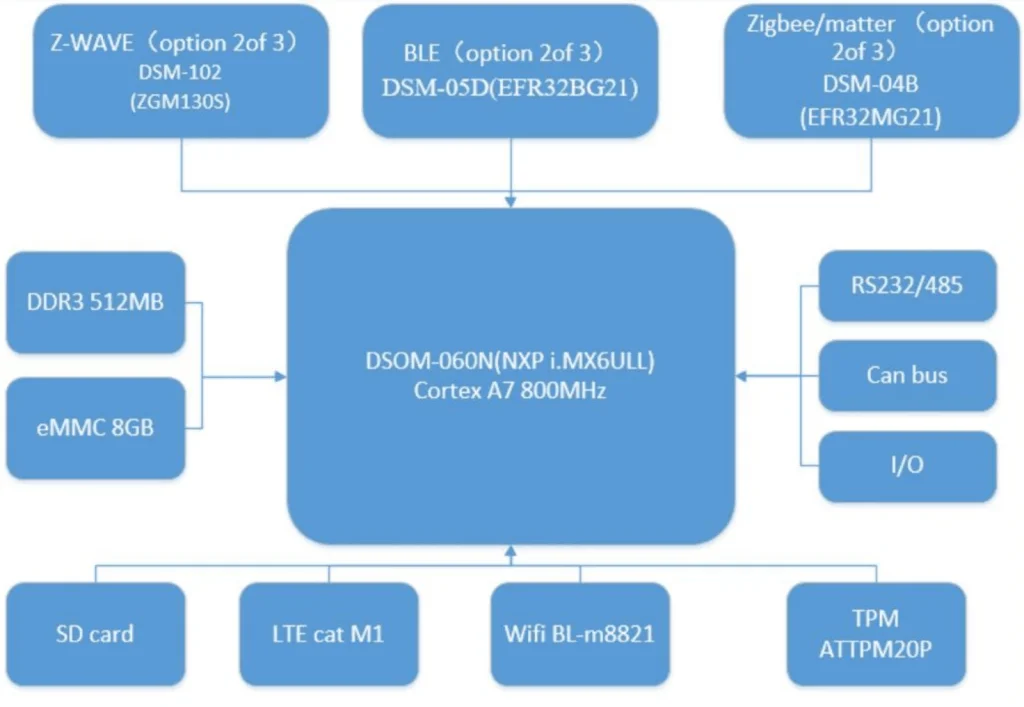
Trusted Platform Module TPM is a chip (microcontroller) to securely stores artifacts used to authenticate a platform (your PC or gateway). Passwords, certificates, and encryption keys are a few examples of these artifacts. Additionally, platform metrics that support maintaining the platform’s reliability can be stored in the TPM.
DSGW-210 RK3328 IoT hub gateway adopts ECC608B chip to make Hardware encryption. ECC (Elliptic Curve Cryptography) is a public key encryption system. Because the ECC algorithm unit has strong security strength and a relatively small key length (256 bits), it uses less bandwidth, storage space, and CPU resources. ECC increases hardware longevity and helps manage the exponential rise of secure connections in mobile devices.
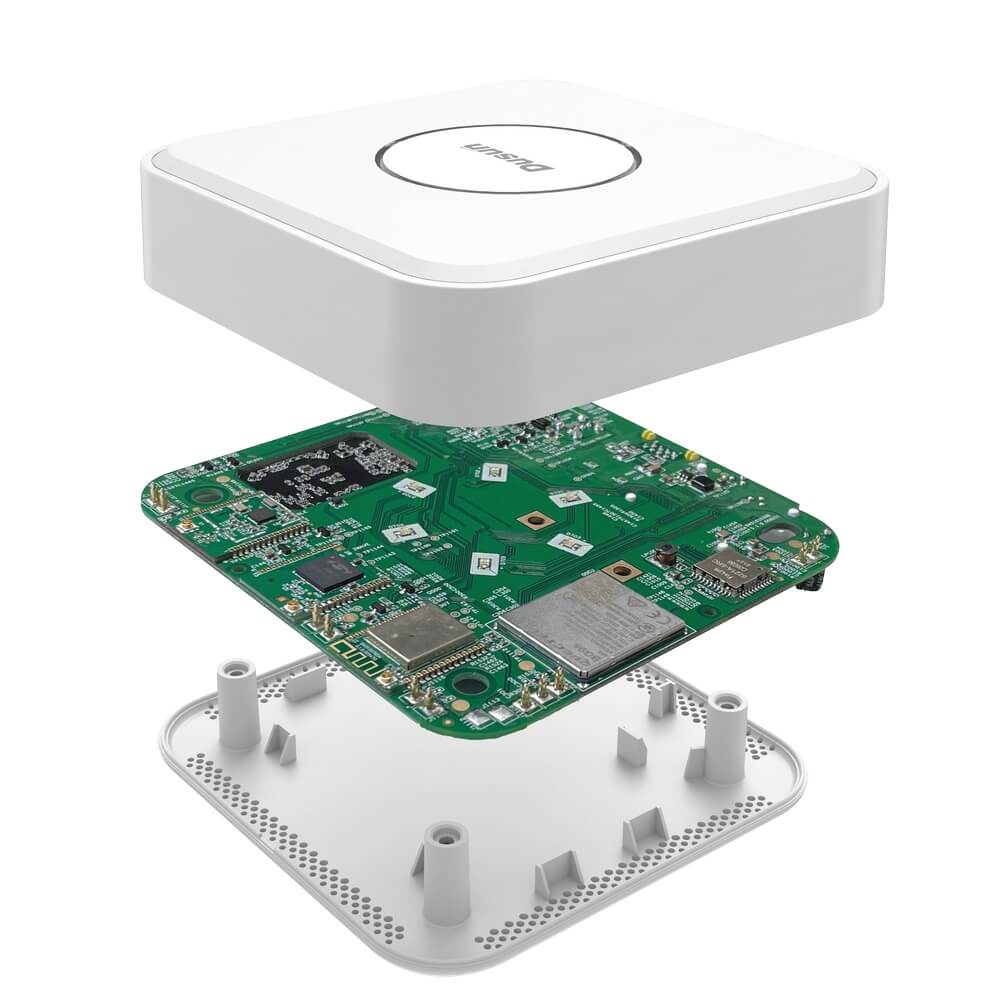
Read DSGW-210 IoT Edge gateway specification and parameters here.
IoT Device Examples
IoT devices come in a variety of forms, and enjoys a wide range of applications. They may be applied to provide intelligent control and management in homes, businesses, healthcare, transportation, urban planning, and other areas. In addition to the IoT gateway mentioned above, iot devices examples in daily life are shown as following:
Smart Sensors
IoT sensing devices include sensors for temperature, humidity, light, pressure, and other variables. They can measure and monitor environmental parameters and transmit the data to IoT hub gateways or local control hub for real-time monitoring and remote control.
Smart Actuators
Actuator devices include smart sockets, switches, lightbulbs, etc. Through wireless connections or other means, they may control the switch, adjustment, operation, etc. of mechanical or electrical devices to achieve automated control and remote control.
Smart Security Gadgets
Security devices such as smoke alarms, cameras, and smart door locks can be wireless connected to keep an eye on and manage security status while performing monitoring and assurance duties.
Medical Wearables
Smart wearable devices including smart watches, smart glasses, smart shoes, etc., may track and record the user’s physical condition, exercise data, environmental information, etc. and offer pertinent services and suggestions. Telemedicine and IoT health monitoring are made possible by their ability to track and record human health indicators.
Communication Devices
Devices for communication, such as IoT gateways, routers, data collectors, etc., are able to establish device-to-device connections and device-to-cloud communication, transmit data, and achieve data aggregation and unified management.
IIoT Controllers
Industrial control devices may implement intelligent control and management of devices based on input sensor data and control instructions.
Read further: what is industrial gateway?
Things to Consider When Purchasing IoT Devices
Businesses in all sectors are ncreasingly leveraging IoT to improve operation efficiency, better understand their clients, and deliver better customer service to support decision-making and boost corporate value. Various IoT devices form a network to exchange data without human-to-human or human-machine interaction. So what factors should businesses consider when buying IoT devices?
Connectivity
The first thing to think about before investing in IoT devices is how to connect it to the Internet and cloud computing platforms, which largely depends on the environment in which the devices will be installed and the type of communication infrastructure provided to them.
For instance, if you’re creating a IoT-enabled washing machine for smart home ecosystem, you may have access to a Wi-Fi home network or a ZigBee/Z-Wave IoT router. As a result, your washing machine has to support one or more transmission medium. Also, in some environments, such as remote areas, where Wi-Fi networks are not accessible, cellular networks may be your only possible connection option. Therefore, you must weigh your options and make decisions based on possibilities and investment that each option presents.
Security
Physical Security
IoT devices are frequently found outside, unsupervised, and unprotected. You must make sure they can’t be deliberately modified with. You should also think about securing any form of data that is kept on the device. It is crucial to encrypt data on the device even if it is expensive to include security protection components in every IoT device.
Data Security
The simple way to transfer data to the cloud is to transmit the data between the device and the IoT sensor to the gateway, in order to accomplish the transmission and delivery of information. The answer to enhance IoT gateway security is already previously provided in the article.
Firmware Update
To prevent security holes, you hava to harden your product code and hardware consistently. In this case, you first need to have a plan for fixing bugs and rolling out patches quickly (rather than letting bugs live for a long, long time). Over-the-air updates are a popular mechanism for updating connected devices.
Future Proofness
Many technologies in use today are likely to become obsolete in the future. Therefore, IoT device durability and the time interval between replacements are additional factors to take into account. For instance, smart home appliances often need to be durable for at least five to ten years.
Ensuring that IoT devices can support future technologies requires designing products with the right balance of both software and hardware. Specialized hardware may produce the highest performance when making IoT devices, but it may also limit future product improvements.
Additionally, you may pick an operating system tailored particularly for the Internet of Things, like Linux, the appropriate quantity of storage and processing resources, and the suitable amount of computing power to enable more flexible expansion of devices to add new features and carry out patch updates. Dusun IoT is an expert in IoT hardware that can be programmed, enabling developers to increase the functionality of existing devices. We’ll offer APIs and SDKs when you make IoT hardware development.
Interoperability
It is important to think about compatibility before purchasing IoT devices. Your IoT devices may need to connect to more IoT device items and interact with them. If the device compatibility is strong, it will guarantees that your IoT devices integrate with your IoT ecosystem without complication or frustration. Zigbee devices are recommended by Dusun IoT, because the standard Zigbee 3.0 protocol ensures better interoperability.
Final Words
IoT devices work together in an ecosystem to automate operations by communicating with other similar devices in the environment. IoT devices may deliver effective system performance, raise the bar for industry intelligence, and and realize functions such as remote monitoring and intelligent control that save time and effort. It may be claimed that IoT devices are a useful tool for autonomous management, injecting new vitality into the growth and development of businesses and society.










